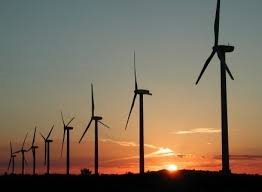Some two thirds of Kenya’s power sources comes from hydro-electric power. But that is likely to change soon. A new study shows that Wind Power is expected to cater for the country’s needs in the next 20 years together just like many countries in the west.
According to a Stanford University report, a standford climate model has been developed by its school of Engineering and the Universit of Delaware which was publiehsed in the Proceedings of the National Academy of Sciences. The report claimed that it might be possible to generate seven fold energy excess, accessible blowing the wind even with a decrease in wind speeds when turbines rob energy from each other.
Yet, in the past, it has been assumed that only coal nuclear, oil, gas and water generation would generate large amounts of waste energy as heat, where as in the model, heat production from generating electricity has been taken into account. Nevertheless, the findings come at a time when Kenya recently commissioned two wind power stations mid this year, such as that of the Lake Turkana Widn Power and Ngong Hills plants with Marsabit under a feasibility study. Thus, wind power is expected to reduce challenges in electricity rationing as well as create jobs.
In the study, the power needed for half of our needs in the year 2030, has been calculated by Mark Jakobsen and Cristina Archer. They both found the reality of the situation was that 5.75 terawatts are available from 4 million wind turbines at 100m high. Yet, without having any negative effect on climate, up to 7.5 terawatts more, would be possible. Leaving only 50 percent of our valuable land surface to erect the terrestrial turbines, half would be constructed over the water, says the report.
Based on the American study Global temperature effects as well as changes in moisture, clouds, climate and several related aspects is one extra available from the studies. Lower wind speeds affects temperature, and evaporation. This model minimized such factors as downdraft and drag from turbine blade rotation turbines.
It continues to say that there is ultimately a point where no further turbines could be usefully erected considering these hundreds of terawatts. And with 250 terawatts being used up, no more energy could ideally be extracted at this saturation wind power potential (SWPP).
Yet another possibility in future is that though the 80 terawatts provided would still be seven times the estimated energy requirement of the human species. This could be achievhed by using only land and coastal turbines. Up to 380 terawatts could be extracted if we harnessed the powerful jet-streams that power planes at high altitudes.
Thanks to the wind farms, Scotland is already self-sufficient in energy. While here in Kenya, wind power generates a small yet serves a proportion of the country’s electricity needs. The Ngong.Hills Wind Farm located in Ngong, Kajiado County produces about 5.1 MW of electricity.
According to KenGen, wind power as a source of power comes with many benefits. According to the Kenyan electricity production company, wind power would be the largest single private investment in Kenya that would see the country save up to Ksh15.6 billion on fuel imports. Moreover, the project would contribute Ksh 3 billion per capita of tax and Sh58.6 billion over the entirety of the project. And once construction is coried out, some 2,500 jobs would be created in addition to another 200 full time jobs, says the company.




